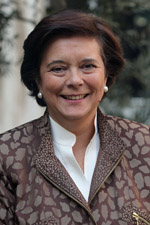The ethical brain as an emotional shortcut to dilemmas
An informative video from the University of Navarra dissects the brain process that allows decisions to be made in seconds in extreme situations.
If you see a train running over five workers on the track, would you push someone to get hit by the train and save the five people? This is one of the 60 dilemmas whose resolution has been investigated in the neural circuits that process decisions of a group of volunteers. Experiments published in scientific journals such as Nature and Neuron track people's brain activity as they decide what to do in extreme situations by means of scanner . Most choose quickly, within five seconds, not to push someone into the road.
Based on results published in scientific journals such as Nature and Neuron, the University of Navarra now summarizes this research in a video prepared by Natalia López Moratalla, professor of Biochemistry and Molecular Biology; Carlos Bernar, specialist in Audiovisual Communication; and Enrique Sueiro, PhD in Biomedical Communication. This video is the second in the series The secrets of your brain, which aims to analyze, summarize and communicate what cutting-edge neuroscience has to say about the brain.
A new experiment asks volunteers to prevent the five people from being run over if they manipulate the switches to divert the train onto a track where only one person is standing. This action would cause possible indirect harm and directly prevent a higher evil. The majority opt to move the switches. In this case deciding requires two more seconds, whether the answer is yes or no to move the switches. It is observed that the activation of brain areas that perform functions of analysis and cost/benefit calculation is more intense than in the dilemma of pushing someone. In contrast, activity in the areas that process emotions is reduced.
According to Professor Natalia López Moratalla, in both experiments the two types of intelligence through which humans know appear: analytical and emotional, each with greater activity in areas of one of the hemispheres of the brain. "The left frontal processes more systematically and slowly. For example, a reflection, even a brief one, may or may not move us to a solidarity financial aid to unknown victims of catastrophes in distant countries. The right hemisphere processes more intuitively, globally and quickly. For example, we feel urged ipso facto to help someone in grave danger. Except for pathologies, both systems are connected and act harmoniously".
Two more seconds to jump the emotional barrier
 |
| Natalia López Moratalla. |
| Photo: Manuel Castells |
The professor explains that these analyses make it possible to better understand that the moral judgment that decides not to cause direct harm to a person involves a strong emotional component. "Neuroimaging techniques detect an intense and rapid activation, within five seconds, in areas of the cerebral cortex that process emotions that affect the relationship with others, when it comes to direct action. Overcoming this barrier and deciding in another direction requires the report which stops the emotional information during the two seconds needed to analyze the cost/benefit ratio of each option, guided by personal convictions".
Natalia López Moratalla points out that "these scientific evidences point today to the way in which the natural, and therefore universal, principle of not doing to others what I do not want for myself is registered in the human brain. It is like a detector that triggers the automatic emotion of pleasure in helping and repugnance in harming. It is a natural intuition that guide without determining the behavior and is an emotional shortcut in situations where lives and humans are at stake and a direct and immediate decision must be made.
Utilitarian people avoid the intuitive emotional shortcut
Also revealing is research that studies how people with brain damage in the region that connects the emotional and the analytical solve ethical dilemmas. "These patients follow an out-of-the-ordinary utilitarian patron saint and are quick to decide to kill-push one person down the road-to save five. However, in a more impersonal context, such as pushing needles, their behavior is normal. Because of this brain lesion, these people lack the innate guide alarm of emotion in moral judgment, although the deliberative system is maintained. Unpleasant feelings, the aversion to do harm that constitutes a signal of caution, leave them unperturbed."
When contradiction arises between the two components of human rationality, the deliberative system takes over. The case of the train illustrates why, "when the dilemmas of pushing someone or changing the switches are presented to utilitarian volunteers-trained in the risk/benefit calculus as rule of behavior-they resolve to both push and change the switches in the same amount of time. In such cases they use the two more seconds needed in this mental activity to rationally adjust the cost/benefit and thus avoid following the emotional, intuitive and natural shortcut to the right thing to do".
The professor of the University of Navarra points out that "animals are never wrong about what is good for them or not: their instinct only allows them to get it right. Nor do they choose. However, people, freed from the confinement of biological automatism, are faced with dilemmas and are open to making mistakes when deciding. In them, there is no instinct that determines behavior, but intuitive knowledge that brings out emotion".
He concludes that codes of conduct provide a hierarchical scale of values that are considered relevant to qualify something as good or bad. They are not biologically determined and therefore differ in normative aspects from one culture to another. "As social regulations, they humanize when the legal and the ethical converge to reward the good (helping, healing) and penalize the bad (killing, not lending attendance in an accident). For this very reason, there is a social schizophrenia when laws and ethics diverge".
More information
